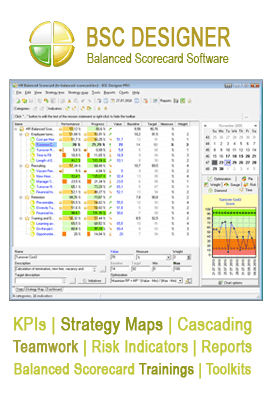Top 10 Disaster Management Plans
| Learn more in the trial version of the BSC Toolkit for Crisis Management |
Disaster management or crisis management consists of steps taken by an organization when any significant event threatens to harm the business environment of the company, the stakeholders of the business house, or the public. Disaster is defined by three key elements, namely, an element of surprise in an event, a real threat to the organization due to that event, and the necessity to react immediately to avert the disaster or mitigate the impact of the disaster.
Crisis management differs substantially from risk management. In general, risk management deals with the assessment of potential threats in advance and devising optimal measures to counter these risks. On the other hand, disaster management becomes operational only after the threats had occurred. An efficient disaster management process consists of techniques and sills to identify, understand, assess, and cope up with a sudden serious situation and handle it effectively from the time of its occurrence to complete eradication of the threat.
Each business organization should have sound disaster management policy guidelines in place. The crises that business entities usually encounter arise from natural causes, technological reasons, confrontations, acts of malevolence, misdeeds and misconducts within the organization, violence in workplaces, and rumors. It is necessary for every organization to have a proper crisis management model to handle unforeseen events. This model should include the diagnosis of the danger signals or impending trouble beforehand if possible, selection of the right turnaround strategy when the disaster occurs, and the prompt implementation of change processes to handle the disaster with continuous monitoring mechanism.
It is obvious that the handling of disasters and crises is highly important to any organization due to the public awareness about it, which could lead to negative impacts financially, legally, and politically. At times, the reputation of the company itself could be at stake because of extensive coverage by the media about the crisis. Hence, contingency plans should be formulated by the management to handle all types of disasters that could occur.
The normal procedure is to simulate various crisis scenarios and practice disaster management drills as a mock exercise. The policy should also stipulate that only designated people discuss the crisis with media and other outside agencies. Finally, speed and efficiency are the most critical factors to initiate immediate responsive action whenever a disaster occurs. The crisis management team should be trained to handle the crisis both from short-term and long-term viewpoints for maximum results.
